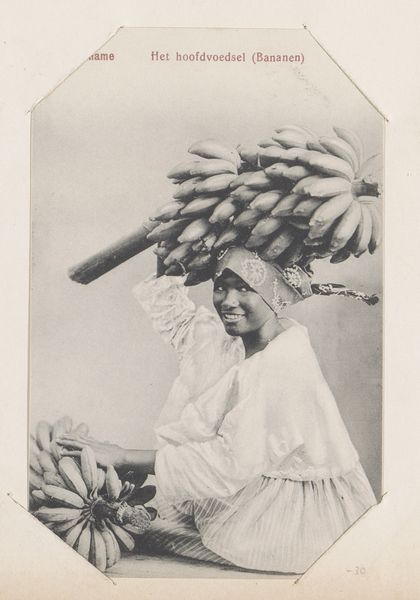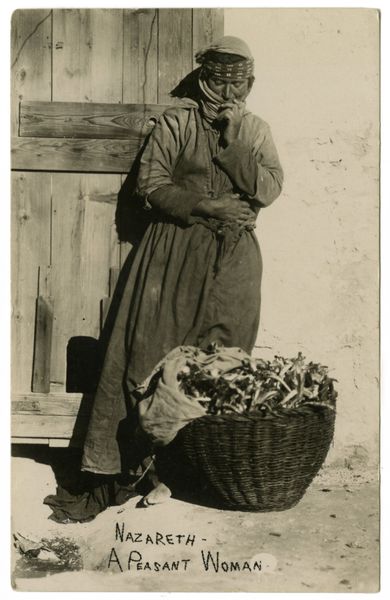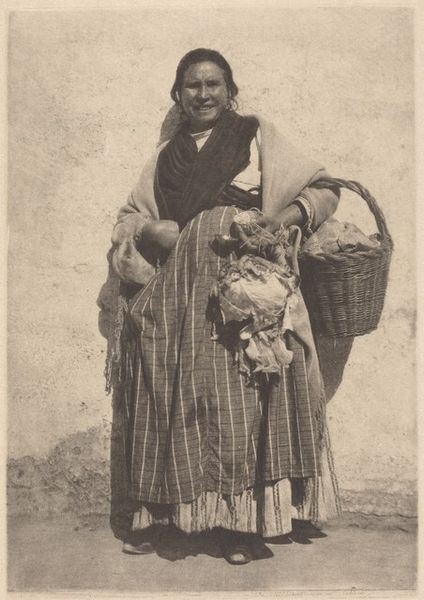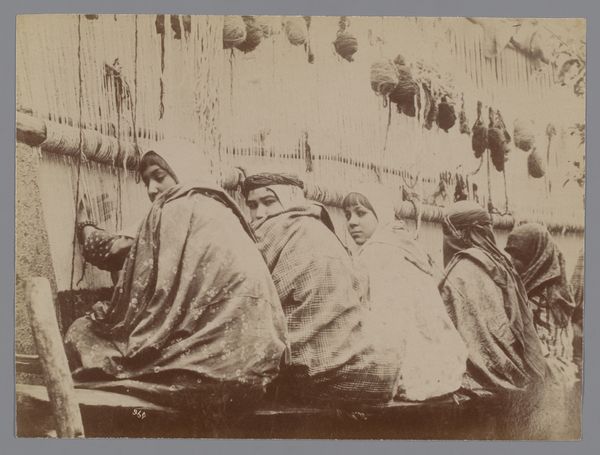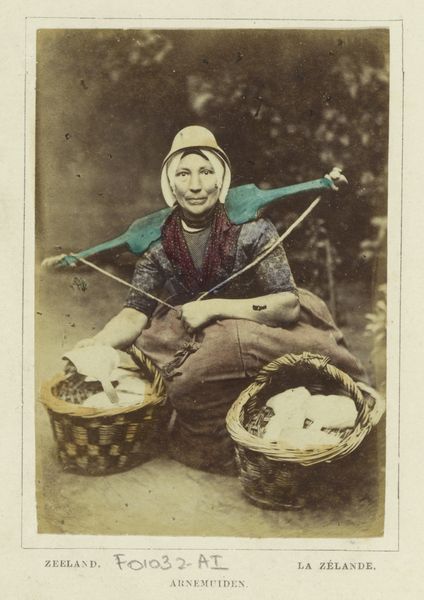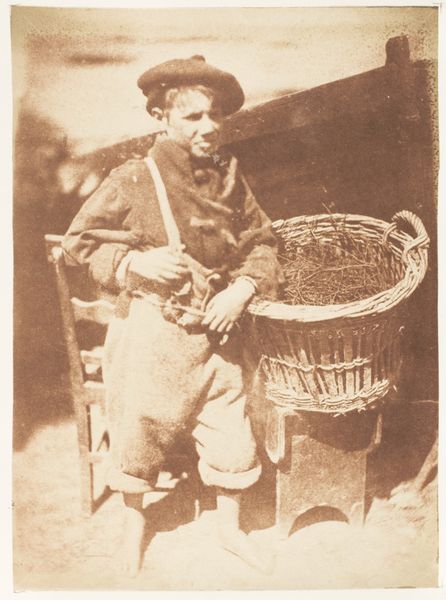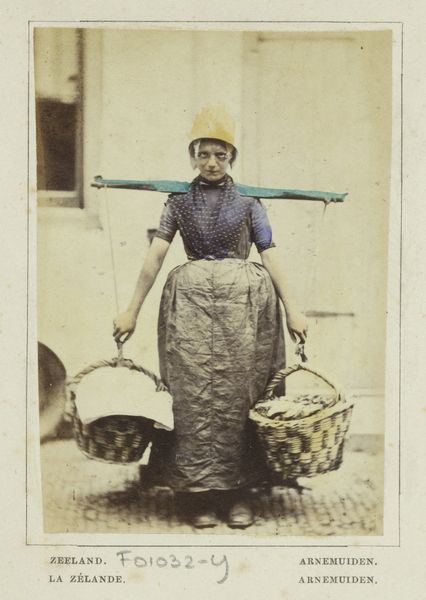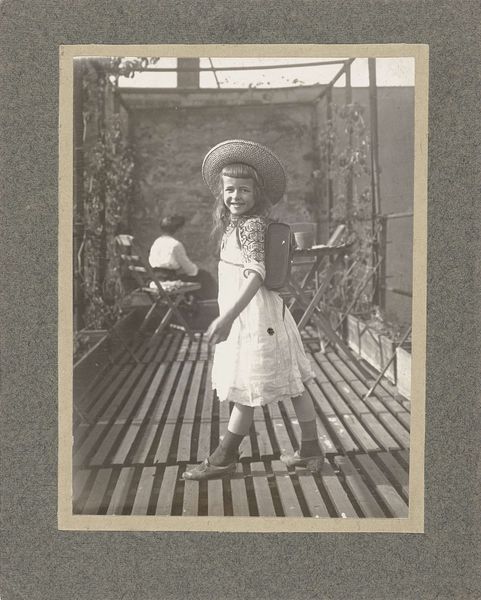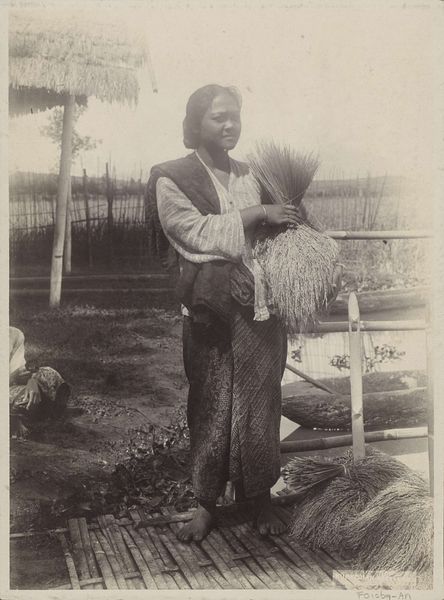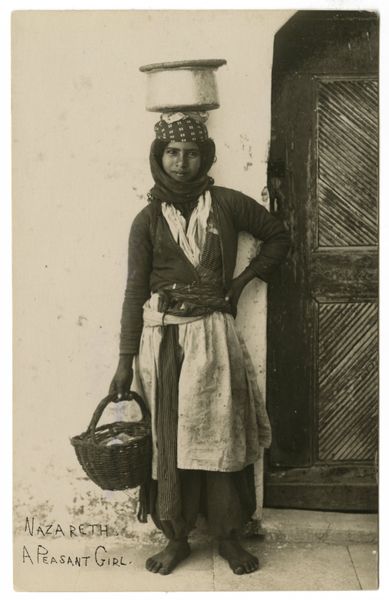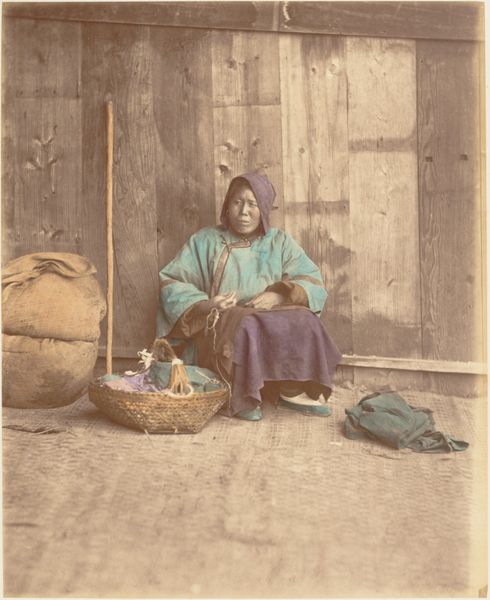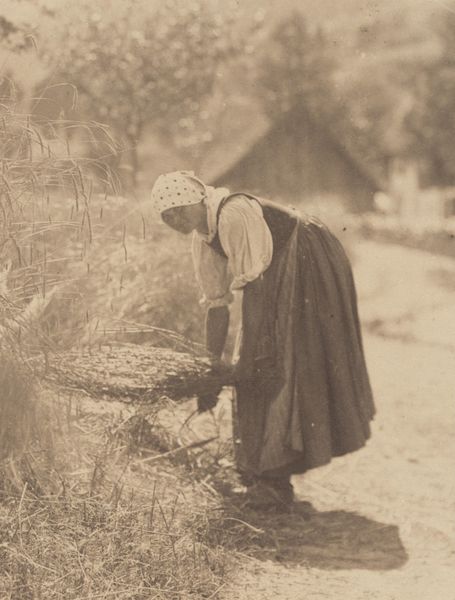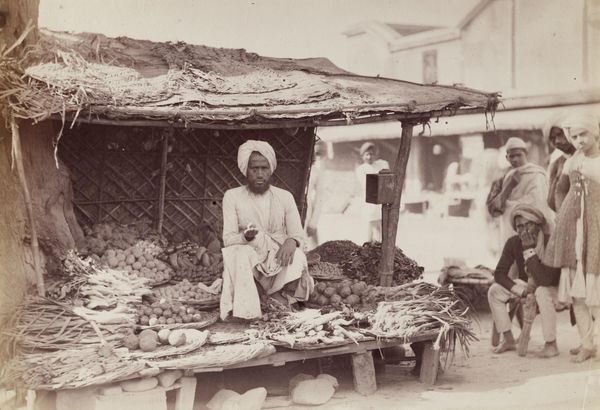
photography, gelatin-silver-print
#
portrait
#
dutch-golden-age
#
asian-art
#
archive photography
#
photography
#
historical photography
#
gelatin-silver-print
#
genre-painting
#
realism
Dimensions: height 57 mm, width 94 mm
Copyright: Rijks Museum: Open Domain
Curator: Looking at this sepia-toned gelatin silver print titled "Javaanse drager met vruchten" from the period 1860 to 1880, by Woodbury & Page, what’s your first take? Editor: It’s incredibly still. It feels posed, studied, almost like a theater tableau frozen in time, yet hints at something quite candid. Curator: Absolutely, it’s fascinating, isn’t it? There’s a palpable sense of realism; however, it uses genre-painting tropes common at the time to exoticize the ‘everyday’ individual. Formally, we have this wonderfully balanced composition—the figure precisely centered with the heavy baskets on either side—speaking volumes about burdens and balance, literally. Editor: The symmetry is compelling—you have these nearly identical burdens suspended from the yoke and meticulously laden with tropical fruit. The play of light on the fruits themselves, casting delicate shadows, it's about capturing form and texture more than action, I'd argue. Curator: I agree. Notice how his gaze avoids ours, turning inward, or perhaps off to another scene out of the frame. This refusal, or rather inability, to make direct eye contact might reflect how portraits of the period performed during the golden age, while also trying to address the subject’s unique status at a specific point in time. Editor: Right! And let's talk about the textural contrast. We have the meticulously woven baskets juxtaposed with the organic forms of the fruits themselves. What’s also noteworthy is the detail, captured through a photographic process still nascent, the grainy backdrop adding to the rich tonality of the fruit. Curator: The fruit is vibrant. It jumps out, almost in protest. Overall, the fruit symbolizes the global network that has enabled this photo to be here today and has empowered us to discuss it, a historical photography piece whose formal considerations carry great impact. Editor: You are absolutely right. When you look at historical artwork you cannot look at the object alone, but instead look around the artwork for potential new interpretations. Thanks for your insights.
Comments
No comments
Be the first to comment and join the conversation on the ultimate creative platform.
